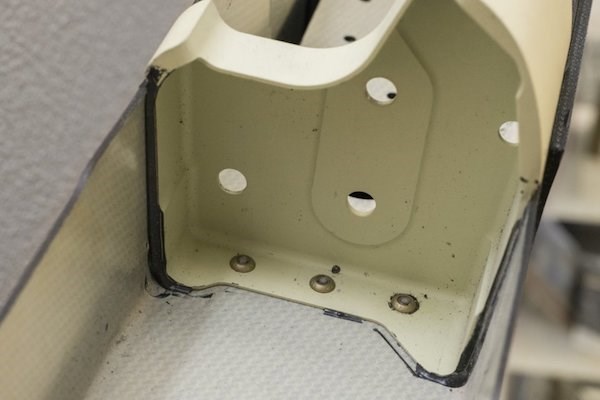New method developed for bonding thermoplastic composites
A researcher at the University of Twente in The Netherlands has reportedly developed a method for adhesion improvement in thermoplastic composites.
Yibo Su, a PhD candidate at the University of Twente (Enschede, The Netherlands) has reportedly developed an improved method for bonding lightweight constructions made from thermoplastic composites. The usage of thermoplastic composites continues to grow but there are limitations, specifically when it comes to the bonding between the different materials. Su believes the research will makes an important contribution to addressing this, paving the way for the wider use of thermoplastic composites.
Su has developed a way of placing a metallic insert into the mold and consolidating it along with the prepreg. The university claims that this “had never been done before and makes for significant gains in production time and cost.” Su looked at which mechanisms help to ensure that the insert is firmly embedded in the thermoplastic composite. He then examined which factors impact adhesion. According to the university:
How rough or porous should the surface be in order for the plastic material to penetrate the insert and adhere to it? And which surface treatments are needed?
Su discovered what the insert needs to look like and which surface the insert needs in order to adhere well to the thermoplastic composite. By placing the fibers in the main load directions, it is possible to make extremely light and strong constructions.
Matthijn de Rooij, associate professor of Tribology and Su’s supervisor stated in a news release: "Many lightweight structures consist of several materials. You need to use the right material in the right place. However, this means that you need to ensure good bonding between the different materials. For use in aviation, the bonding between lightweight metals and thermoplastic composites is particularly important. The metal hinges of a door made from thermoplastic composites are one example. You can’t just drill a hole in thermoplastic composites, or put a screw in, because then you lose some of the strength of the materials. It is much better to create that join using an insert within the material. This insert needs to be firmly secured to the material so that it does not become a weak point. Su found a good way of securing the insert, so that the join is very strong – almost as strong as the rest of the composite."
He went on to say that they still need to find out whether this join will stay strong in the long-term after several hours in flight. As such, "follow-up research is therefore needed in order to put this application into practice."

Example of an aircraft component made of thermoplastic composite with metal elements that have been mechanically fastened in the traditional way. (Photo credit: University of Twente).
Related Content
-
Epoxy-based structural film adhesive intended for aerospace, MRO
CAMX 2023: Park Aerospace is presenting its new aerospace-grade film adhesive material Aeroadhere FAE-350-1, in addition to other product offerings intended for aerospace, defense and spacecraft.
-
Scott Bader ATC begins Crestabond MMA structural adhesive production
Scott Bader’s Drummondville, Canada, facility has begun manufacturing and supplying composites-applicable adhesives to its North American customers.
-
Composite resins price change report
CW’s running summary of resin price change announcements from major material suppliers that serve the composites manufacturing industry.
















